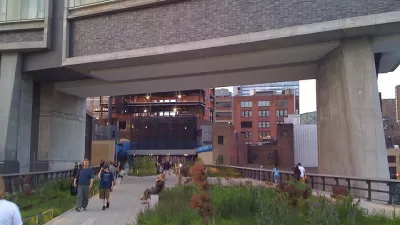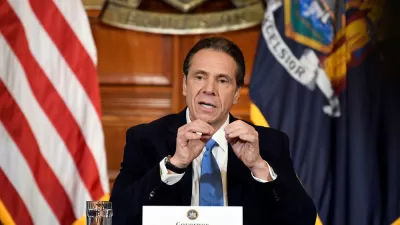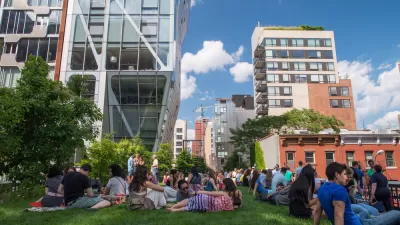A new debate has emerged, starting from a source very close to the project, about the effects of the High Line in New York City.

Criticisms of the High Line have ben far less frequent and much younger than the heaps of praise offered the transformative project. Much more common than concerns about gentrification or displacement, were willing imitations of the many of the component ideas at work on the High Line—an elevated structure given to pedestrians, a focus on plantings, community ownership of public space and much more.
In an article by Laura Bliss for CityLab, however, Robert Hammond, one of the co-founders of the Friends of the High Line and the current executive director of the organization, echoes some of the criticisms of the High Line. In his own words, as quoted in the article, Hammond says: "We were from the community. We wanted to do it for the neighborhood," adding, "Ultimately, we failed."
According to Bliss, Hammond and the Friends of the High Line are "course correcting," adding paid listening sessions, paid jobs-training programs, and new events, like a summer series of Latin dance parties.
But, writes Bliss, "there’s a lot the High Line could have done before it opened that it can’t make up for now. Its designers might have paid stronger attention to a few basic principles of attractive public spaces, and specifically those that attract low-income and minority park-users." The limited number of access points and the long list of prohibitions posted around the park provide two examples of design decisions that have produced predictable results. "Perhaps more critically, Friends of the High Line could have worked harder from the start to advocate for affordable housing," adds Bliss.
Bliss writes a lot more on the subject, also examining other public space projects around the city to show that the High Line's example has helped other advocates and designers avoid the same mistakes.
Steve Cuozzo, writing for the New York Post, takes umbrage with the characterization of the High Line as a failure, however. "[Hammond's baffling stroke of creator’s remorse lent dubious gravitas to the High Line Backlash," writes Cuozzo.
Cuozzo recounts criticisms of the project in recent years, offered by Mayor Bill de Blasio and the head of the tenants association at the nearby lower-income Fulton House project, describing them as "ridiculous" and "idiotic." Cuozzo's concluding thought: "I hope Hammond stops blaming himself for 'failure' and accepts that he helped bring forth a true wonder of our age."
FULL STORY: The High Line's Next Balancing Act

Planetizen Federal Action Tracker
A weekly monitor of how Trump’s orders and actions are impacting planners and planning in America.

Congressman Proposes Bill to Rename DC Metro “Trump Train”
The Make Autorail Great Again Act would withhold federal funding to the system until the Washington Metropolitan Area Transit Authority (WMATA), rebrands as the Washington Metropolitan Authority for Greater Access (WMAGA).

DARTSpace Platform Streamlines Dallas TOD Application Process
The Dallas transit agency hopes a shorter permitting timeline will boost transit-oriented development around rail stations.

Renters Now Outnumber Homeowners in Over 200 US Suburbs
High housing costs in city centers and the new-found flexibility offered by remote work are pushing more renters to suburban areas.

The Tiny, Adorable $7,000 Car Turning Japan Onto EVs
The single seat Mibot charges from a regular plug as quickly as an iPad, and is about half the price of an average EV.

Supreme Court Ruling in Pipeline Case Guts Federal Environmental Law
The decision limits the scope of a federal law that mandates extensive environmental impact reviews of energy, infrastructure, and transportation projects.
Urban Design for Planners 1: Software Tools
This six-course series explores essential urban design concepts using open source software and equips planners with the tools they need to participate fully in the urban design process.
Planning for Universal Design
Learn the tools for implementing Universal Design in planning regulations.
Municipality of Princeton
Roanoke Valley-Alleghany Regional Commission
City of Mt Shasta
City of Camden Redevelopment Agency
City of Astoria
Transportation Research & Education Center (TREC) at Portland State University
US High Speed Rail Association
City of Camden Redevelopment Agency
Municipality of Princeton (NJ)





























